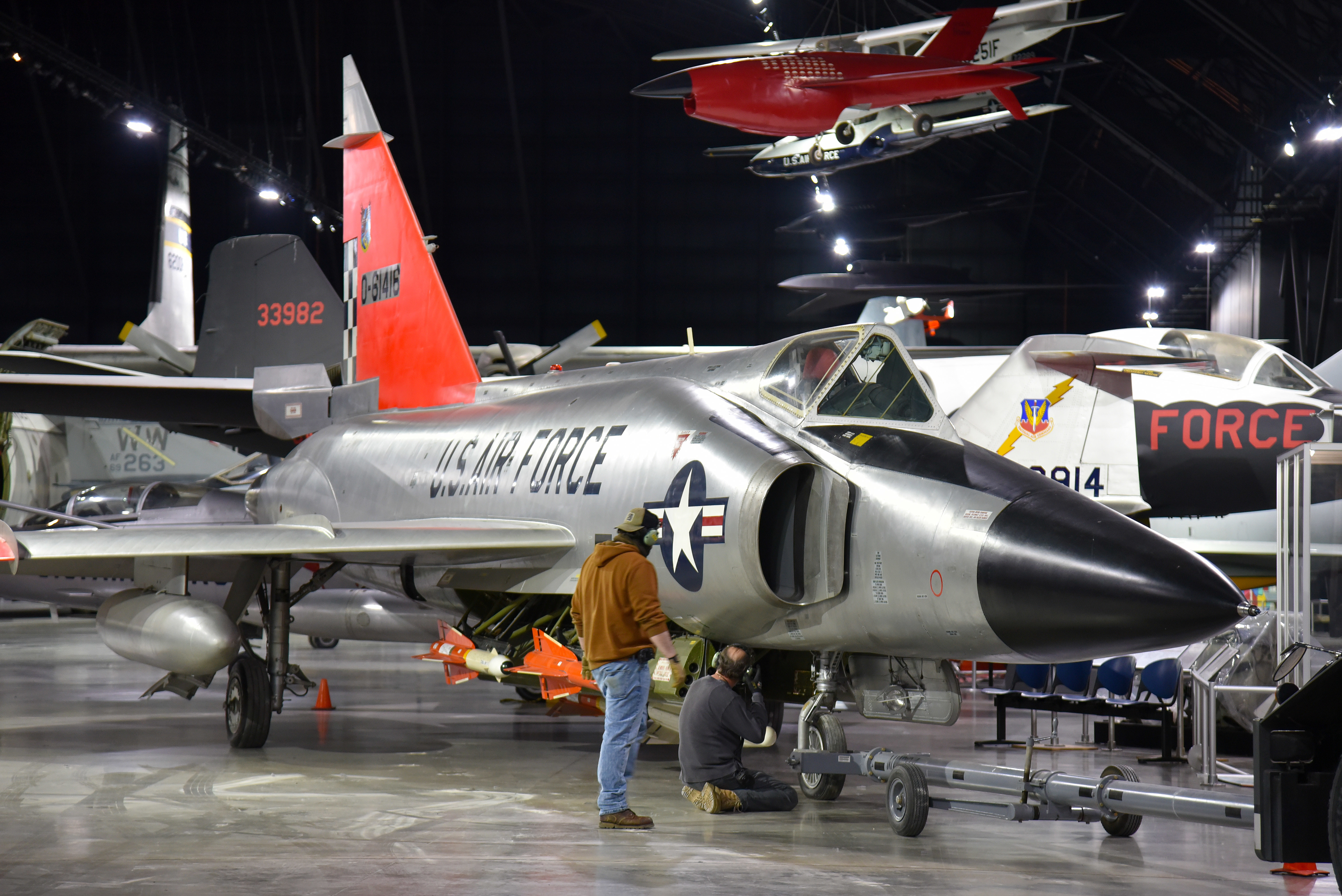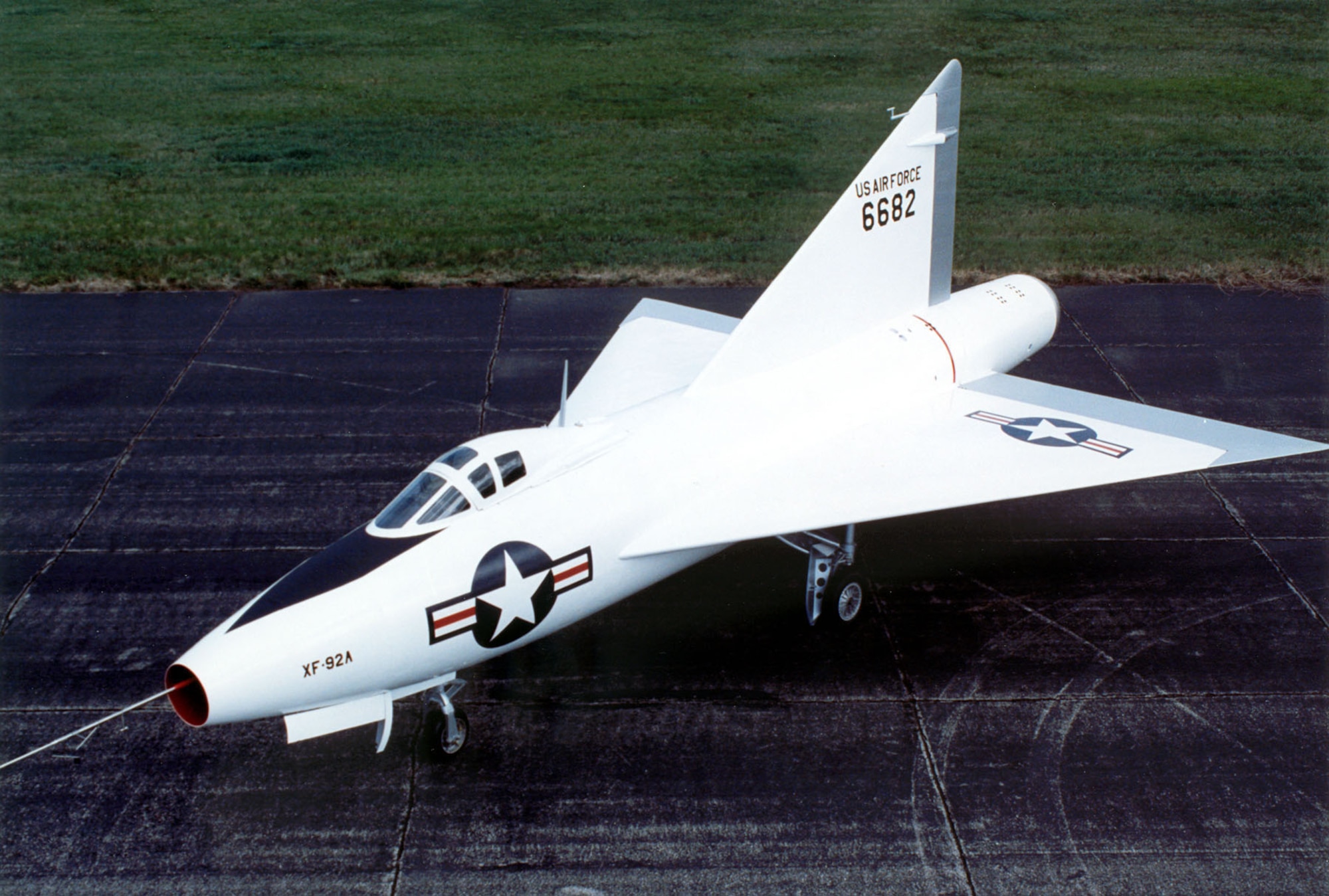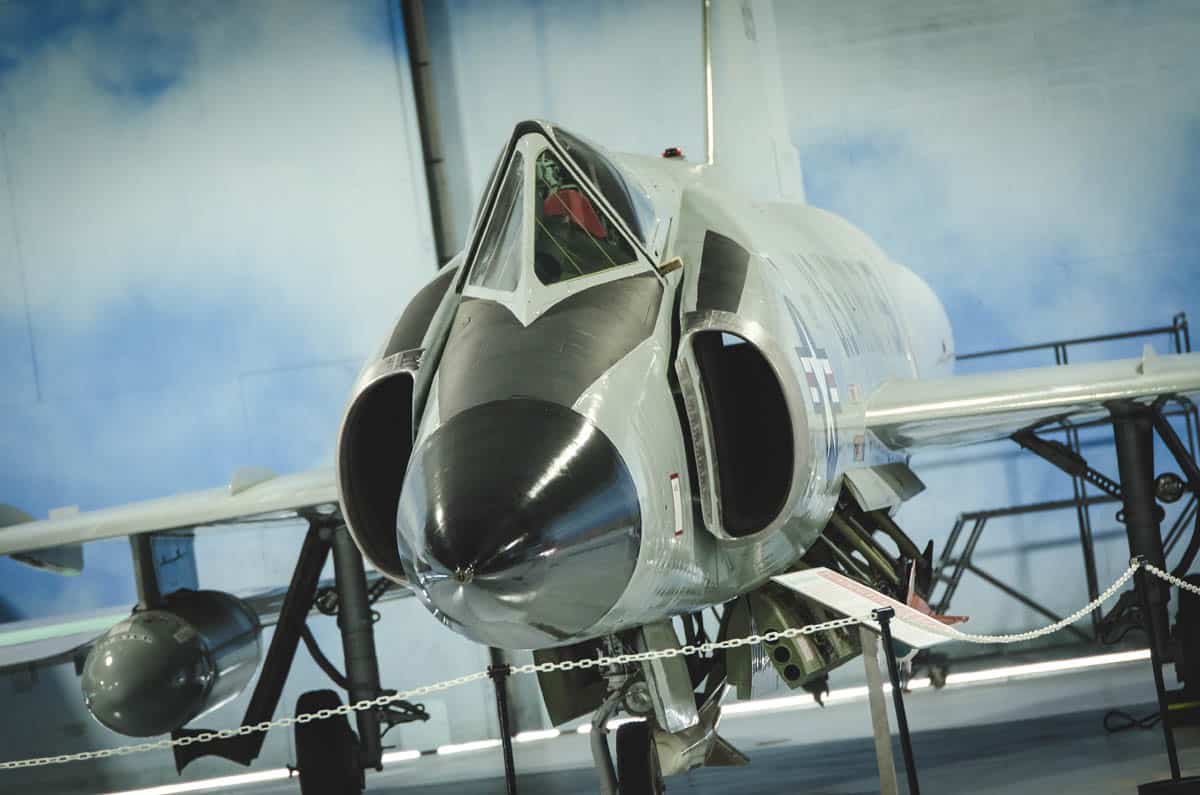
- Yes
- No
- 8.3 or lower
- 8.7
- 9.0
- 9.3
- 9.7
- 10.0
- 10.3 or higher
- I voted no
- Tech Tree
- Event or Battle Pass
- Squadron Vehicle
- Pack or GE Premium
- I voted no
Overview
The F-102 Delta Dagger is an interceptor aircraft designed and produced by the American aircraft manufacturer Convair. A member of the Century Series, the F-102 was the first operational supersonic interceptor and delta-wing fighter operated by the United States Air Force. Exactly 1,000 of the type were built, 111 of which were the side-by-side TF-102 training variant. It was the first aircraft in the United States to use area ruling, which in turn gave the aircraft its distinctive coke-bottle shape.
It served with three nations and saw combat over Vietnam and Cyprus, as well as numerous interceptions of Tu-95s and Tu-16s over US airspace. Three were lost to aircraft fire, one by a MiG-21 over Vietnam and two Turkish F-102s by Greek F-5s over Cyprus. It lasted until 1976 in American service, and 1979 in Turkish, and Greek service. QF-102s lasted until 1986.



History
History
In 1948, the United States Air Force was looking for a high performance all-weather interceptor, under the name “1954 Ultimate Interceptor”. The USAF decided all competing entries had to be built around a state-of-the-art fire control system (FCS), being designed before the airframe to ensure compatibility. Six manufacturers submitted nine entries, and in July 1954 Lockheed, Republic and Convair all were authorized to create mockups of their submissions, of which Convair’s was selected the winner and designated XF-102.
Convair had experimented with delta-winged aircraft before, under the XF-92 program of test aircraft. The original F-102 was to be built very similarly to the XP-92, using the XJ67 turbojet engine (a derivative of the Bristol-Siddeley Olympus), with interim aircraft using the Westinghouse J40 turbojet engine with afterburner. With the failure of the J40 (as well as the J67) however, the XF-102 program was soon given the J57 engine to power the aircraft. The F-102 would also use the MA-1 FCS, later changed to the Hughes MC-3 and later the MG-10 in production examples.
During development, it was also decided that the up-and-coming F-102A would only be an interim aircraft, and the development of the F-102B (later F-106) would be the desired version, even though the F-102A would have almost three times more examples produced than the F-106.

The YF-102 service test aircraft reached the USAF by 1953, taking its first flight from Edwards Air Force Base on the 23rd of October, 1953, later lost on the 1st of November, 1953, in an accident that occurred during a Mach 1 test run, caused by severe buffeting in the transonic speed regime. The second YF-102 flew on the 11th of January, 1954, showing terrible transonic performance and high transonic drag due to the fuselage shape. The aircraft was limited to Mach 0.98 and 48,000 feet.

Convair took the YF-102 back to the drawing board and took advantage of the area rule knowledge acquired from the Germans after World War Two, redesigning the fuselage to have its distinctive coke-bottle shape, pinching it in near the wing roots, as well as lengthening the fuselage eleven feet. A more powerful J57 was also installed, the intakes and canopy were revised, and the aircraft’s frame was made lighter.
The first redesigned YF-102 took flight on the 20th of December, 1954, finally reaching Mach 1.22 and a maximum height of 53,000 feet. These improvements gave the USAF confidence in Convair, and a new production contract was signed.
The F-102 reached operational status in 1956, with the first production unit taking flight on the 24th of June, 1955.
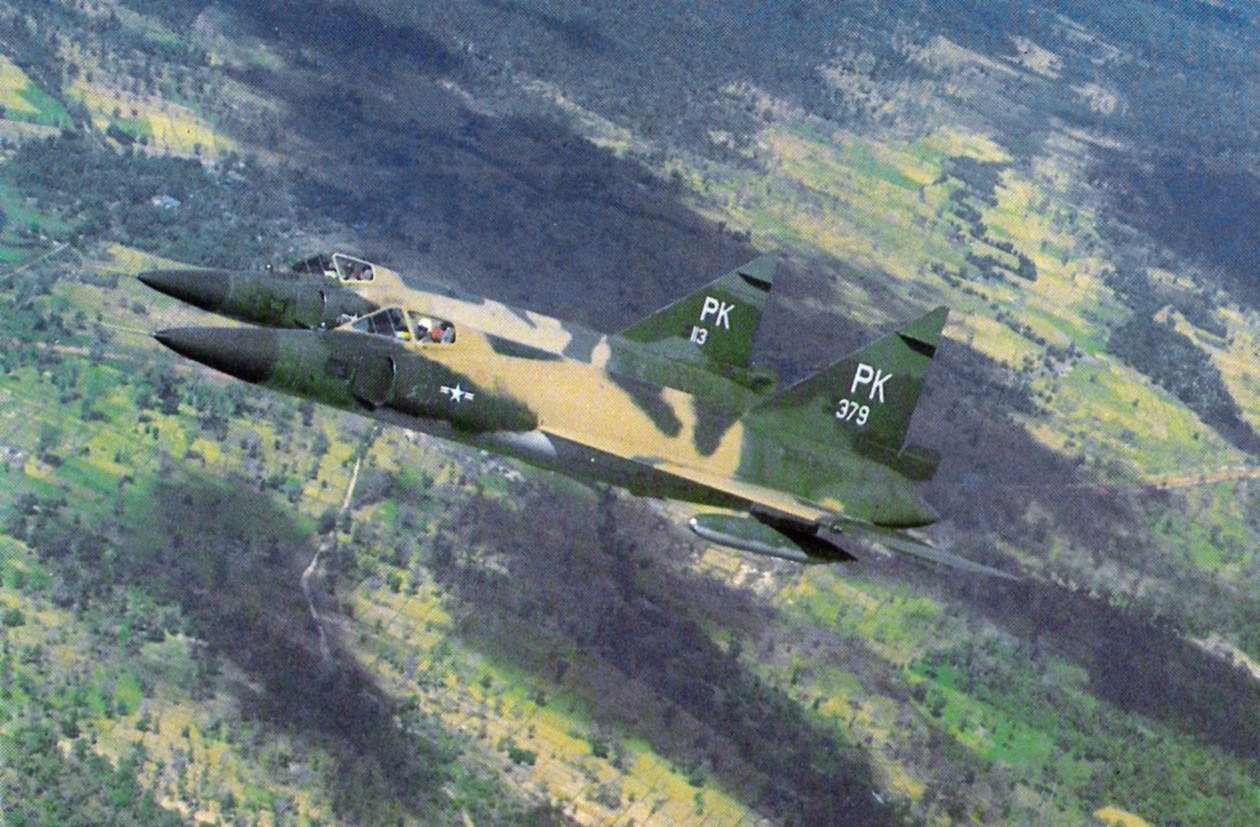
The F-102 was used in combat in Vietnam as a fighter patrol aircraft and bomber escort, only losing fourteen aircraft, one due to air to air combat. It was also employed as a ground striker, using its 24 2.75 inch (70mm) FFAR rockets to hit North Vietnamese targets on the ground, with limited success. It would go on to serve with the USAF and Air National Guard units from 1956 onwards to 1976, when the last units were retired in favor of other fighters like the F-15 and F-16, which were just entering production.


In addition, the F-102 was exported in limited quantity, seeing buyers with the Hellenic and Turkish Air Forces, which both used it in combat in the Cyprus invasion of 1974. Two Turkish F-102s were shot down by Greek F-5s, two of three air combat losses of the type.
Almost all American F-102s were converted to QF-102s or PQM-102 drones, and expended by 1986. The last Turkish and Greek F-102s were retired in 1979, with a few from all three air forces being placed on display in museums or as gate guardians.
Armament
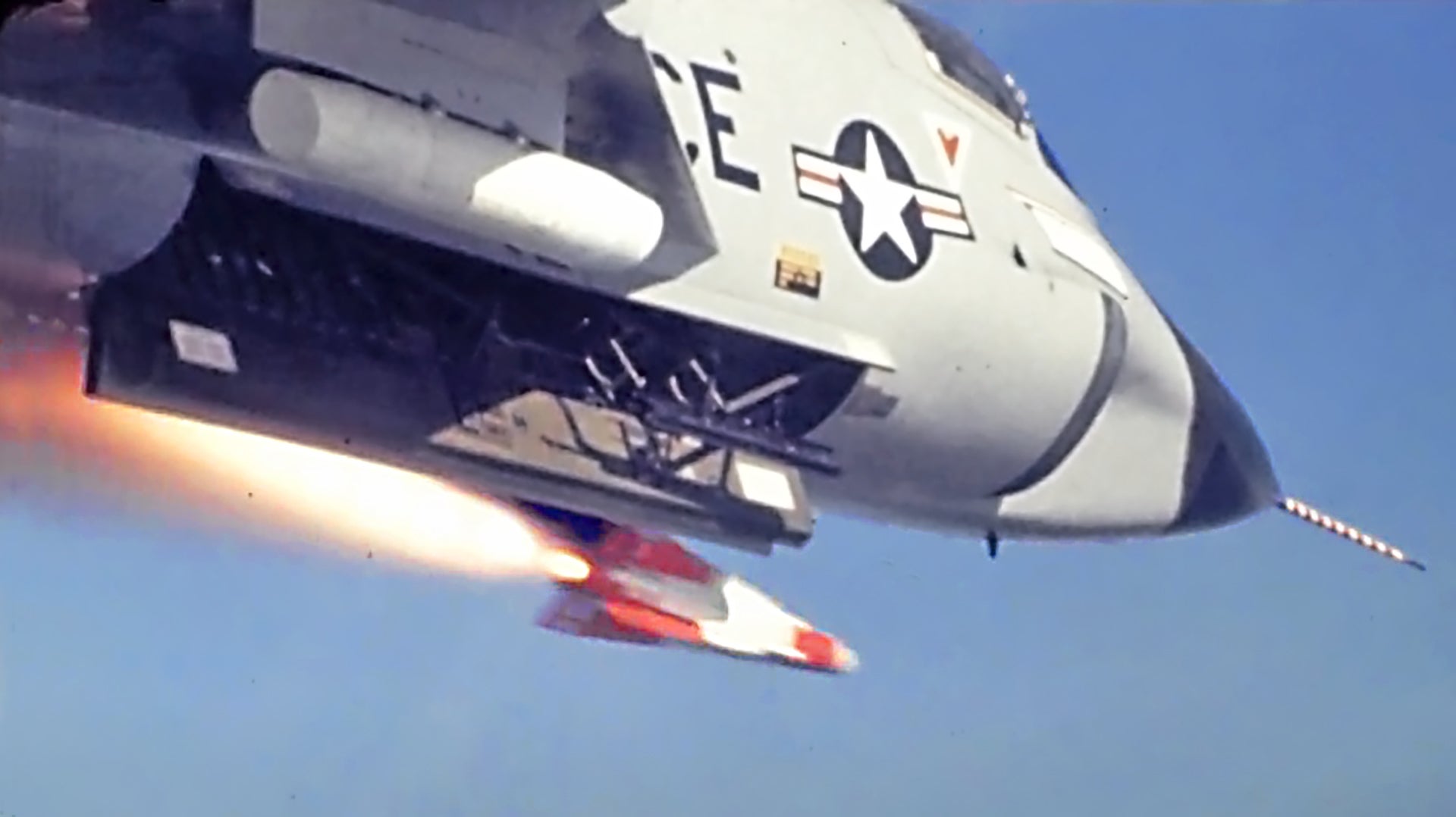
Armament
Being an interceptor, USAF doctrine specified the exclusion of a gun. A further variant, the F-102C, would’ve included a gun, but only two were converted as service test units and the program never made it off the ground.
The F-102 carried six AIM-4 Falcons internally, three being radar guided (AIM-4A) and three being IR guided (AIM-4D), as well as 24 2.75in (70mm) FFAR rockets in missile bay doors (later removed to allow for compatibility for AIM-26A/B). It could also carry three AIM-4s and a specialized AIM-26A or B Super Falcon with a nuclear or conventional warhead, respectively.
The AIM-4s would be fired in salvos of two, one IR, then one radar, in this order, and would be directed by the FCS on when and where to fire. The FFARs were also guided by the FCS, released when the aircraft reached the point of firing at the enemy aircraft.
Characteristics
General Characteristics
- Crew: 1
- Length: 68 ft 4 in (20.83 m)
- Wingspan: 38 ft 1 in (11.61 m)
- Height: 21 ft 2.5 in (6.464 m)
- Wing area: 695 sq ft (64.6 m2) conically cambered wing
- Airfoil: NACA 0004-65 mod
- Empty weight: 19,350 lb (8,777 kg)
- Gross weight: 24,494 lb (11,110 kg)
- Max takeoff weight: 31,500 lb (14,288 kg)
- Fuel capacity: 1,085 US gal (903 imp gal; 4,110 L) internal + 2 × 215 US gal (179 imp gal; 810 L) drop tanks (carried on outboard wing pylons)
- Powerplant: 1 × Pratt & Whitney J57-P-25 afterburning turbojet engine, 11,700 lbf (52 kN) thrust dry, 17,000 lbf (76 kN) with afterburner
Performance
- Maximum speed: 825 mph (1,328 km/h, 717 kn) at 40,000 ft (12,192 m)
- Maximum speed: Mach 1.25, Mach 0.95 with drop tanks
- Range: 1,350 mi (2,170 km, 1,170 nmi)
- Service ceiling: 53,400 ft (16,300 m)
- Rate of climb: 13,000 ft/min (66 m/s)
- Wing loading: 35 lb/sq ft (170 kg/m2)
- Thrust/weight: 0.7
Implementation in War Thunder
Implementation
How could the F-102 be implemented in War Thunder? I envision it being placed at about 9.0 BR, in Rank VI of the US air tree, before the F-104A/C folder. Of course, with no guns, it would rely exclusively on its FFAR rockets and AIM-4 Falcon missiles to do any damage. It also has no flares or chaff, so any missiles would have to be avoided through maneuvering.
The F-102, being a delta-winged aircraft, would have good maneuverability similar to that of a Mirage, being able to pull high-AOA turns, but also bleeding speed quickly in a sustained turn.
Salvoing the missiles in pairs of IR and Radar missiles could be rather hard to implement (not impossible), and I recommend Gaijin instead treats each missile as its own missile, letting the pilot fire off each one as they choose, so as to give the pilot more control and more opportunities to score kills. Being in missile bays, the bays should have to be opened before the missile can fire in realistic and sim battles, but in arcade they would open automatically.
One way to implement the MG-10 FCS could be to give the F-102 a CCIP for its rockets, allowing the pilot to see where they need to fire the rockets off. This would make using the rockets far more tolerable than just a blind fire like the F-89D. Since the FFARs were removed when the AIM-26 and AIM-4s were used in the central bay, allow the rocket pod to be swapped for two central AIM-4s or an AIM-26.
Even though I’d love to see this as a tech tree vehicle, having it there would be hard. Having it be a GE or even a pack premium would be alright, but I personally would prefer it as an event vehicle, as it would be a rather meme-y vehicle that wouldn’t be great as a vehicle in the tech tree. Grinding through Tier VI with just rockets and AIM-4s would be hard. Uptiers to 10.0 wouldn’t be too awful, as its load of six missiles could do quite well, and there are few, if any, all aspect AAMs to worry about.
The Turkish or Greek variants could also be added to other tech trees. Seeing as the Turkish F-104S TAF was in the Italian tree as a pack premium before being removed, a good replacement for it could be a GE premium or squadron vehicle F-102 TAF. The Greek variant could optionally go to Italy as well, but with the Turkish F-102 being there it would make little sense.
Closing
I absolutely adore the F-102 and its bigger brother, the F-106, and I’d love to see the Deuce come to War Thunder in any way. Spicing up the Cold War tiers of War Thunder with a silly interceptor like the F-102 could be just what the game needs for some more interesting battles and tactics. Thanks for reading!

Sources
History-related:
Development of the F-102
More F-102 Development History
Hellenic Air Force F-102s
F-102s in Vietnam
F-102 Drones
The F-102C
Armament-related:
The F-102’s Armament
Characteristics related:
The F-102’s Performance Characteristics
More F-102 Characteristics
Additional information gathered from Wikipedia and various other sources listed in the Bibliography and References sections.
